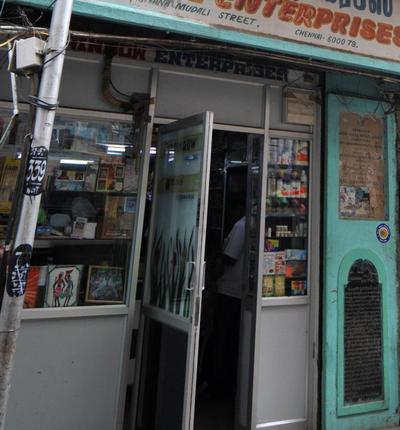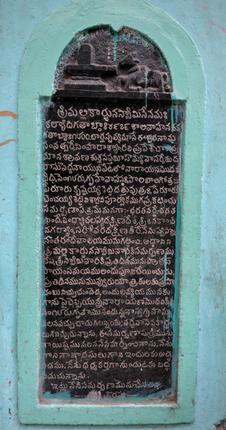
3-foot-tall block has Telugu inscriptions detailing donations made by merchant
A few metres away from Misri Complex on Narayana Mudali Street in Sowcarpet of north Chennai lies one of the treasures of Old Madras: a three-feet-tall granite plaque with Telugu inscriptions that comprise details of donations made by a prominent merchant to a Shaivite temple in Kancheepuram, in the late 19 century.
The discovery came to light when The Hindu photographer, B. Jothi Ramalingam, who was covering a fire accident in the area, found the plaque, quite by chance, in a two-storey building there.
Archaeologists and Telugu scholars in the city say such a rare plaque has been found in the city after many years. Tucked between the entrance of a building and a shop in its basement, the plaque has 30 short sentences inscribed on it, and a Shiva Lingam and Nandi on top.

The Lingam and Nandi on the plaque indicate the owner of the plaque may have been a Shaivite, say Telugu scholars.
“Based on the Saka year mentioned in the inscription, which is in chaste Telugu, the plaque has been dated to 1878 A.D. The plaque is nothing but a public document of the donations made by an individual,” says M. Sampathkumar, head of department of Telugu, University of Madras (Marina campus).
He, along with Telugu scholars at the Government Oriental Manuscripts Library, decoded the inscriptions on the plaque.
According to the inscription, K. Chenchenaiya Chetty, a well-known merchant and philanthropist in the then Old Madras region, was the adopted son of Krishnamaiya Chetty, a native of Nellore.
In the inscription, Chenchenaiya says that the income from the building where the plaque is affixed has been donated to a Shiva temple in Kancheepuram.
The donation should be used to conduct evening rituals and pujas at the temple. Further, a portion of the donated money should be used to provide free food and shelter to three pilgrims who visit the temple daily, says the inscription.
Interestingly, the inscription also says that the revenue from the building will be continued to be donated to the temple by Chenchenaiya’s heirs, after the merchant’s lifetime.
Historians and Telugu scholars say the trend of erecting individual plaques on donations was common in Old Madras, especially among rich traders and merchants, mostly Telugus settled in George Town since the Vijayanagara era in the 14 century.
However, over the years, many such plaques from Old Madras have been lost following the destruction or demolition of old buildings.
In fact, most of the plaques at Government Museum in Egmore have Tamil inscriptions and were found in the southern districts.
“Such rare discoveries, especially from the city where Modern India began, should be preserved for future generations,” says K. Sridharan, retired deputy director of the State archaeology department.
source: http://www.thehindu.com / The Hindu / Home> News> Cities> Chennai> Society / by D. Madhavan / Chennai – July 13th, 2014